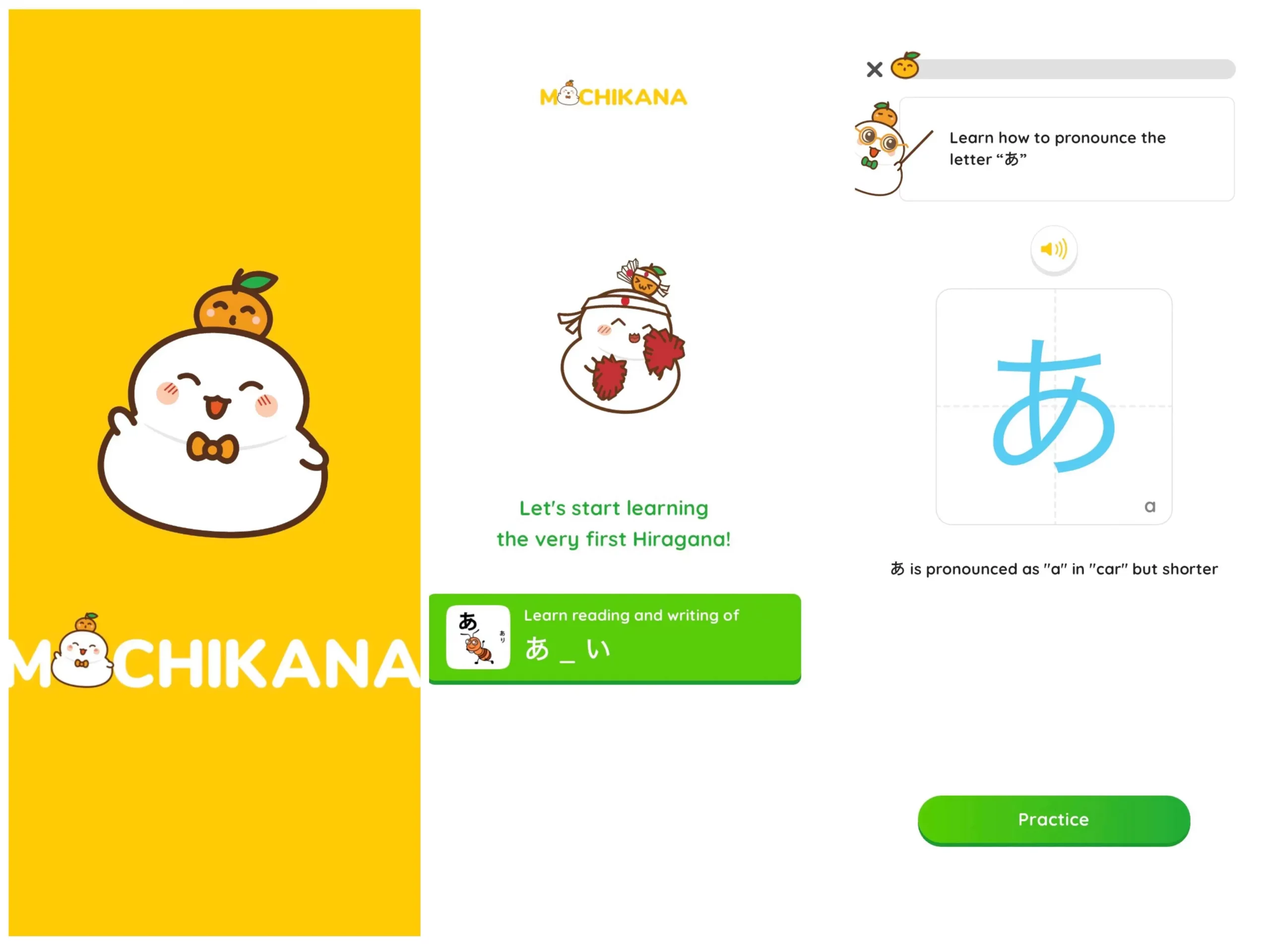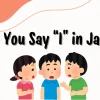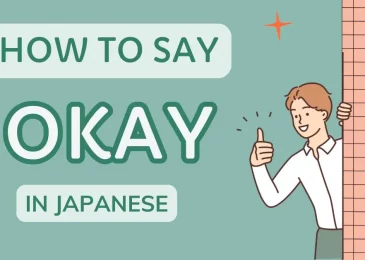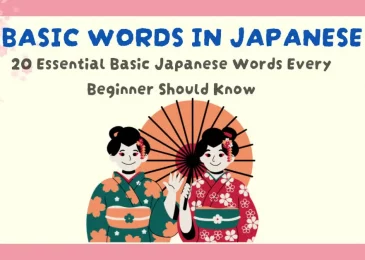- How Hard is it to Learn Japanese?
- What Makes Japanese Easier to Learn?
- Steps to learning Japanese
- Is Japanese Hard to Learn?
- Conclusion
Japanese is often regarded as one of the most challenging languages to learn. Its intricate writing systems, unique grammar structure, and rich cultural context can feel daunting for beginners. Many learners wonder if they can truly master it or if the journey will be too overwhelming.
However, whether Japanese is hard to learn largely depends on your mindset, study strategies, and the resources you choose. In this guide, we’ll explore what makes Japanese seem difficult, what aspects are easier than they appear, and how you can navigate the challenges effectively. By the end, you’ll gain a clear understanding of the language and practical steps to make your learning journey more approachable and enjoyable.
How Hard is it to Learn Japanese?
1. The Writing Systems
Japanese combines three writing systems—Hiragana, Katakana, and Kanji—each with unique purposes:
- Hiragana: This phonetic alphabet is fundamental for beginners, used to write native words, verb endings, and grammatical particles. Learning Hiragana is often the first step for new learners.
- Katakana: Primarily for foreign words, loanwords, and technical terms. For example, “computer” is written as コンピュータ (konpyuuta). Katakana is essential for modern communication, particularly in technology and branding.
- Kanji: The most complex aspect, Kanji requires memorization of thousands of characters, each with multiple readings and meanings. To master Kanji, learners must focus on stroke order and the context in which each character is used. For example, 生 (sei) means “life” in one context, and 生きる (ikiru) means “to live” in another.
Switching between these systems in a single sentence, such as 私はテレビを見る (Watashi wa terebi o miru), challenges beginners but also makes Japanese visually and structurally unique.
2. Grammar Differences
Japanese grammar introduces several challenges for English speakers:
- Subject-Object-Verb (SOV) Structure: Sentence order is reversed compared to English. For instance, “I eat sushi” becomes “I sushi eat” in Japanese. This requires learners to rethink sentence construction entirely.
- Particles: Grammatical markers like は (wa) and を (wo) define relationships between words, often replacing prepositions in English. Misusing particles can lead to sentences with entirely different meanings.
- Politeness Levels: Social hierarchy influences speech. For example, “to eat” can be たべる (taberu) in casual speech, たべます (tabemasu) in polite speech, or 召し上がります (meshiagarimasu) in formal settings. Learning when and how to use each form adds another layer of complexity.
3. Lack of Cognates
Unlike European languages that share Latin or Greek roots with English, Japanese words often have no recognizable connection. For example:
- 電車 (densha) means “train.”
- 学校 (gakkou) means “school.”
These words require complete memorization. However, some Katakana loanwords like アイスクリーム (aisukurīmu) for “ice cream” or レストラン (resutoran) for “restaurant” offer familiar starting points.
4. Pronunciation and Intonation
While Japanese pronunciation is straightforward due to its consistent phonetics, intonation significantly affects meaning. For example:
- はし (hashi) means “chopsticks” when pronounced with a rising pitch but “bridge” when pronounced with a falling pitch.
Learners must train their ears to recognize these subtle changes, as mispronunciation can lead to misunderstandings.
What Makes Japanese Easier to Learn?
1. Phonetic Simplicity
Japanese has a small inventory of sounds: just 5 vowels (a, i, u, e, o) and a limited number of consonants. Each syllable is pronounced clearly, and there are no silent letters or unpredictable pronunciations. This consistency makes Japanese pronunciation easier than English or French.
2. Consistent Grammar Rules
- Verb Forms: Verbs like たべる (taberu) remain the same regardless of the subject (e.g., “I eat,” “he eats”).
- Nouns: Japanese lacks plural forms. Context words like たくさん (takusan) for “many” are used instead.
These rules reduce the number of variations learners must memorize, simplifying grammar overall.
3. Rich Learning Resources
- Apps: Modern tools like MochiKana simplify learning Hiragana and Katakana, while MochiKanji helps break Kanji into manageable lessons with integrated vocabulary.
- Media: Anime, manga, and dramas make learning immersive and entertaining. For example, watching a series with subtitles can reinforce listening and vocabulary simultaneously.
- Online Communities: Language exchange platforms, forums, and social media groups connect learners with native speakers for real-world practice.
4. Cultural Motivation
Japanese culture offers endless inspiration, from food like sushi and ramen to art forms like origami and calligraphy. For many, interests in anime, samurai history, or traditional tea ceremonies provide long-term motivation, helping learners push through challenging stages.
Steps to Learning Japanese
1. Start with Hiragana and Katakana
Mastering Hiragana and Katakana is the essential first step in learning Japanese. These two phonetic alphabets form the foundation of the language, enabling you to read basic texts and pronounce words correctly before tackling Kanji.
Simplify Your Learning with MochiKana
Tools like MochiKana are specifically designed for beginners, offering an engaging and efficient way to learn Hiragana and Katakana:
- Spaced Repetition Flashcards: Reinforce memory by revisiting characters at scientifically optimized intervals.
- Interactive Practice: Combine characters into real words, enhancing recognition and application.
- Gamified Learning: Stay motivated with fun challenges, progress tracking, and rewards as you master each alphabet.
With MochiKana, you’ll confidently build a strong foundation, preparing for more complex aspects of the Japanese language.
2. Break Down Kanji Learning
Kanji is often the most intimidating part of Japanese, but breaking it into smaller, manageable lessons makes it more approachable. Focus on learning high-frequency characters first, and use tools like MochiKanji to simplify the process.
How MochiKanji Helps You Master Kanji
MochiKanji is a comprehensive app designed to teach Kanji, vocabulary, and commonly conversational phrases. It combines key features to make the Japanese learning effective and enjoyable:
- Extensive Vocabulary: Covers thousands of Kanji and vocabulary, guiding learners from N5 to N2 levels, and other specialized courses.
- Spaced Repetition System: Reinforces memory with proven techniques like Spaced Repetition and Golden Time reminder.
- Interactive Writing Practice: Diverse Kanji writing exercises teach proper stroke order, helping with retention and writing accuracy.
- Integrated Vocabulary Learning: Learn Kanji alongside related vocabulary for practical application in real-life contexts.
- Progress Tracking: Monitor your journey, highlight mastered Kanji and identify areas needing improvement.
With its well-rounded approach, MochiKanji ensures you gain both confidence and proficiency in Kanji, vocabulary, and conversational skills.
3. Practice Listening and Speaking
Developing listening and speaking skills is vital for communication. Here’s how to practice effectively:
- Use Audio Resources: Listen to Japanese podcasts, music, or language apps to improve your pronunciation and comprehension.
- Repeat and Mimic: Practice repeating phrases aloud to mirror native intonation and rhythm.
- Join Language Groups: Engage with a language partner or join a conversation group for real-world speaking practice.
4. Immerse Yourself in the Language
Immersing yourself in Japanese helps reinforce what you’ve learned while exposing you to natural language use. Try these methods:
- Watch Japanese Media: Anime, dramas, and movies are excellent tools for learning vocabulary and sentence structure.
- Read Manga or Simple Texts: Reading helps reinforce Hiragana, Katakana, and Kanji in context.
- Shadow Native Speakers: Repeat after native speakers to improve your fluency and intonation.
5. Set Realistic Goals
To avoid feeling overwhelmed, break your learning journey into manageable milestones:
- Focus on Small Achievements: Examples include mastering 50 Kanji, completing basic conversations, or understanding a short video.
- Celebrate Your Progress: Reward yourself for achievements to stay motivated and consistent.
By combining these tips with tools like MochiKana and MochiKanji, you’ll tackle the challenges of learning Japanese effectively. Consistent practice, immersion, and strategic learning will make your journey not only manageable but also rewarding.
Is Japanese Hard to Learn?
So, is Japanese hard to learn? The answer depends on your perspective and goals. While Japanese has its challenges—particularly with the writing systems and grammar—it also has many features that make it approachable, such as phonetic simplicity and consistent rules.
Success in learning Japanese ultimately comes down to your motivation, the resources you use, and your willingness to practice regularly. With tools like MochiKana and MochiKanji, you can break down the complexities and make steady progress toward fluency.
Conclusion
Learning Japanese may seem daunting at first, but with the right strategies and resources, it becomes a manageable and rewarding journey. Start by mastering Hiragana and Katakana, then gradually build your vocabulary and Kanji knowledge through consistent practice and structured learning.Remember, every small step you take brings you closer to fluency. Embrace the challenges, celebrate your progress, and enjoy the unique experience of connecting with the Japanese language and culture. がんばって!(Ganbatte!) – Good luck!







